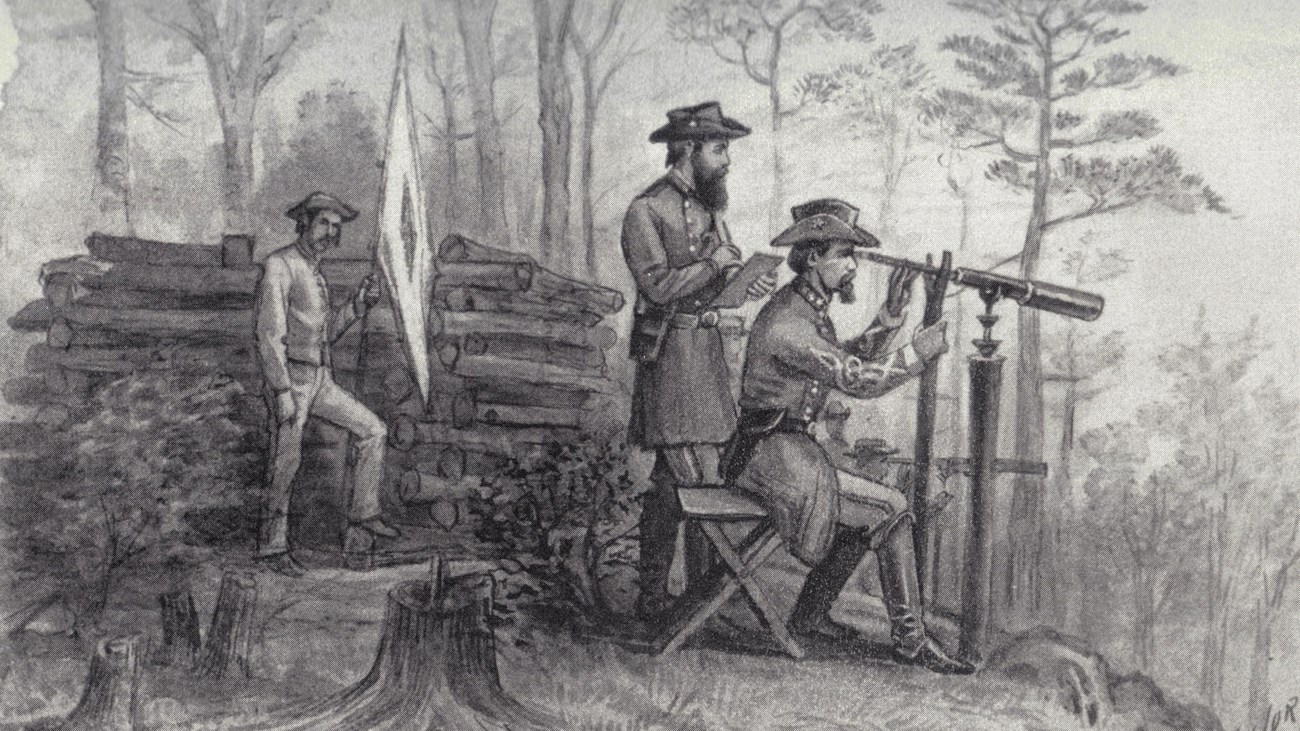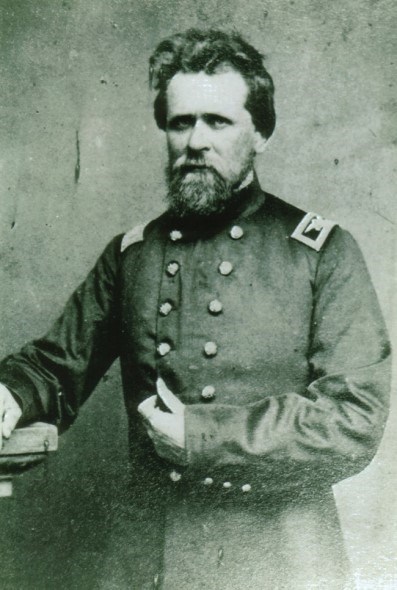Part of a series of articles titled A Victory Turned From Disaster.
Previous: Silent March
Next: Bearing the Brunt
Article

Sketch by James E. Taylor, an artist for Frank Leslie’s Illustrated Newspaper, 1864
“We gave a Rebel yell and ran right in on them and scattered them like chaff before the wind.”
—B.F. Cobb, 10th Georgia Infantry
5:00 a.m.—The opening attack of the Battle of Cedar Creek began here at about 5:00 a.m. A Confederate scouting party on Signal Knob, directly before you, had seen that a frontal attack on the entrenchments and the positions just north of Cedar Creek and the North Fork of the Shenandoah would be suicidal. Attacking from the side, or flank, however, just might work. After a silent all-night march along the base of the Massanutten, the Confederates forded the creek and river and, aided by a dense fog, stormed this hill, catching many of the Union soldiers unaware, some still sleeping in their tents. Within 30 minutes the Union position here had been overrun, with the survivors fleeing back toward the Valley Pike.

Library of Congress
After their burning of the Shenandoah Valley the Union Army of the Shenandoah Valley encamped among the bluffs north of Cedar Creek. Anchoring the army’s left flank was the Army of West Virginia, also known at the 8th Corps, commanded by Brig. Gen. George Crook. Numbering approximately 4,200 men, the 8th Corps’ two divisions were positioned east of the Valley Pike in a staggered formation. Holding the front line were the 1,700 men of Col. Joseph Thoburn’s 1st Division, overlooking Cedar Creek and the North Fork of the Shenandoah River. The 2nd Division commanded by Col. Rutherford B. Hayes, future President of the United States, encamped across a broad plateau approximately three-quarters of a mile north.
Col. Joseph Thoburn, a surgeon before the war, had quickly volunteered in 1861 and had seen extensive action in both West Virginia and the Shenandoah Valley. Nearly all his men were battle-tested veterans. Upon taking their position along Cedar Creek in early October, Thoburn had his men dig a series of strong entrenchments near modern Bowman’s Mill Road. Unfortunately, almost none of these fortifications survive today, although they were described vividly by a Confederate soldier who attacked them during the battle:
“The enemy was posted on an almost impregnable position on the bluff overlooking Cedar Creek… The enemy’s breastworks were built of strong timbers, with earth thrown against them, with a deep trench on the inside… In front of this breastwork, and from forty to fifty feet in breadth, was an abattis…“
The Confederates rolled out of a dense fog in the pre-dawn hours of October 19, catching the majority of Thoburn’s men completely by surprise. Most were still in their tents and the few who managed to form a line were quickly overwhelmed. One Confederate described the scene as they overran Thoburn’s position:
“Such a sight as met our eyes as we mounted their works was not often seen. For a mile or more… towards the rear was a vast plain… Tents whitened the field from one end to the other… while the country behind was one living sea of men and horses—all fleeing for and safety. Men, shoeless and hatless, went flying like mad to the rear… Such confusion, such a panic, was never witnessed before by the troops…”
Three of the four Union artillery batteries where quickly captured, as Thoburn’s line collapsed. In the confused retreat that followed, Col. Thoburn desperately attempted to rally his men before being struck and mortally wounded. Soon after, Col. Hayes’ 2nd Division came under attack. Although it fought gallantly, Hayes’ line was also quickly overwhelmed. Despite the long odds, the Confederate attack had worked perfectly, with the 8th Corps routed and fleeing. The Union left had completely collapsed.
“The awful conviction came to mind in a moment, that the Eighth Corps, so gallant in all its former engagements, had been entirely and instantly changed into a disorganized mass of stragglers.”
—Record of the 114th New York State Volunteers
Part of a series of articles titled A Victory Turned From Disaster.
Previous: Silent March
Next: Bearing the Brunt
Last updated: December 17, 2021